Why You Need a Print Marketing Collateral Strategy


A print marketing collateral strategy is essential for any small business to be successful with this marketing medium. This strategy helps you map out the important printed assets needed along with branding, budgeting and printing.
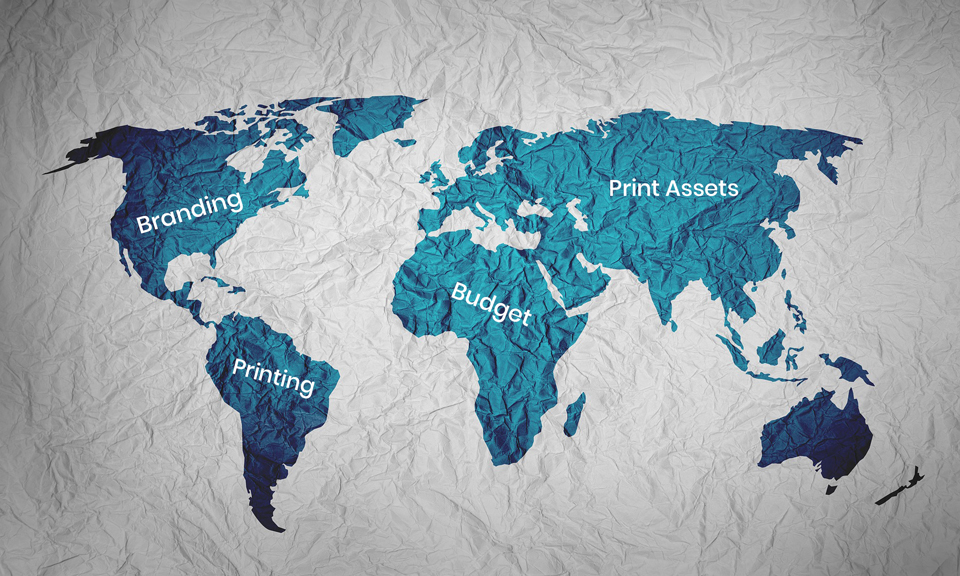
Whether you already know your business goals and what you hope to achieve with your marketing strategy, or not, this will be a simple practice in planning. Use these best practices to create your print marketing collateral strategy and make this must-have marketing element work for your business.
Identify Which Print Assets You Need
One of the most important factors to consider when developing your print marketing collateral strategy is which assets you ll need and when you ll need them. If you already have a print marketing calendar, start there. Events, product launches, big client meetings and seasonal promotions will all affect which assets you need.
For example, for big in-person sales meetings with potential clients or events where you might meet new leads, you need leave-behind assets like business cards, brochures, and catalogs. For outreach and direct marketing activities, you need postcards for mailers and door hangers or flyers for local branding.
You may find it helpful to break down your print collateral needs further into categories. Sam Rooeintan, Chief Creative Office at MarStudio suggests using the following categories:
- Corporate identity print materials: This includes business cards, letterhead stationery, and envelopes.
- Promotional or marketing materials: This includes flyers, brochures, posters, door hangers and banners.
- Direct mail: This includes postcards,
- Promotional products: This includes items like coasters and stickers things you ll give away.
Although Sam isn't wrong about his categories, we decided to construct our own list to help you better organize your print collateral.
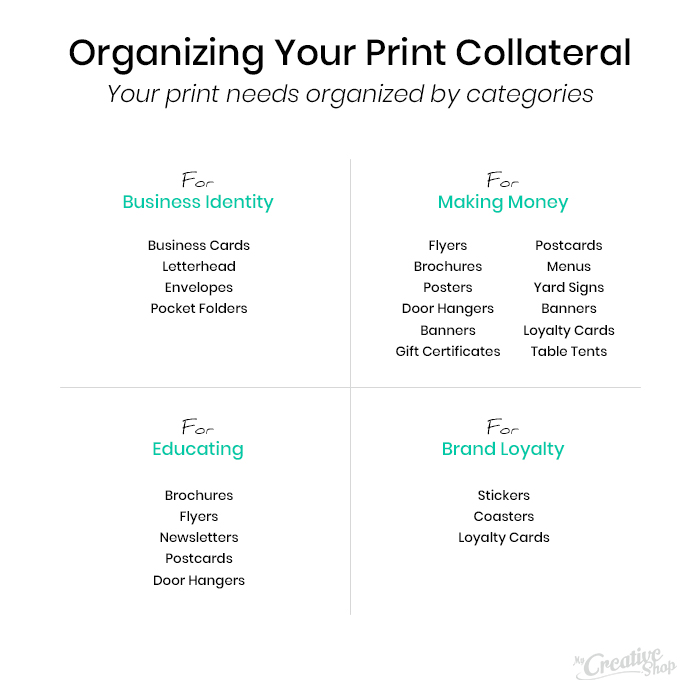
Add all of this into a spreadsheet aligning the collateral needed with the category along with the date. Laying the details out like this will make it easier to manage.
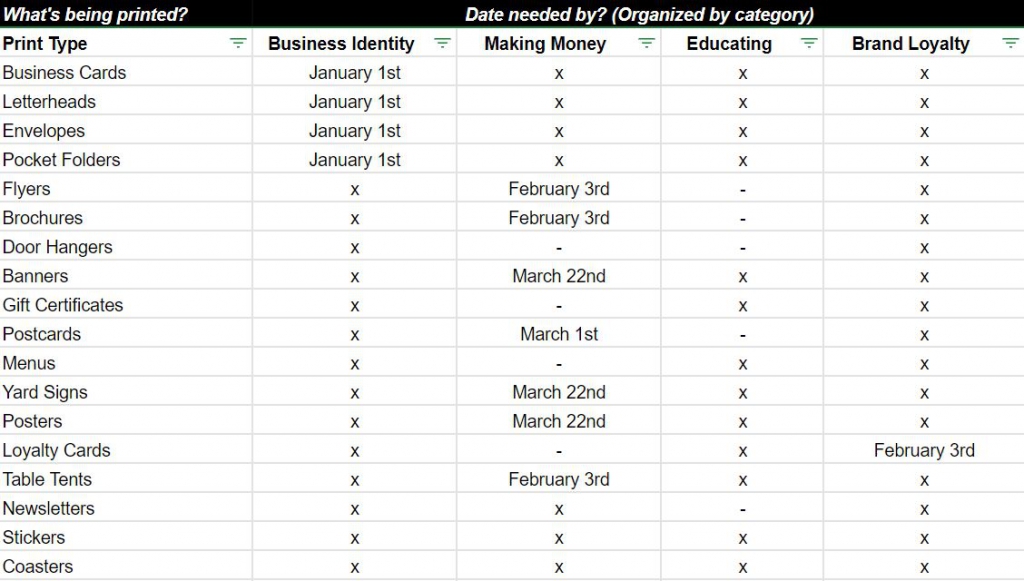
Get an idea of the print marketing materials most businesses need at all times in our blog post: The Marketing Materials Every Business Needs Year Round.
Determine Distribution Methods
The materials you print and the various events they re created for will dictate your marketing methods. This is another important detail to take into account, as it affects your budget and timing. For example, if you plan to send a direct mail campaign ahead of a summer promotion, you ll need to have the marketing collateral designed, printed and sent out a few weeks ahead of time.
Include distribution methods in your strategy, along with key dates, like when design needs to be complete, when printing should be finished, and when materials need to be sent. As you plan this aspect of your print marketing collateral strategy, you may find these blog posts helpful:
- 8 Secrets to Successful Door Hanger Marketing
- 6 Ways a Brochure Can Benefit Your Business
- Modern Direct Mail Marketing Ideas
Weave Consistent Elements Into Each Piece of Collateral
With your print asset needs settled, it s time to consider how you ll maintain consistent branding from one piece to the next. For example, the tone of voice used on your conference flyers should match that of your leave-behind brochures. The colors used on your door hangers should be the same as those used for your banners.
The reasoning for this is simple: you want potential clients and customers to remember you. Make it easier to do exactly that by consistently using the same colors and branding elements, including formatting, messaging and voice. Think about the most popular brands in the world, like Apple and Coca Cola, and you ll see the value in consistent branding.
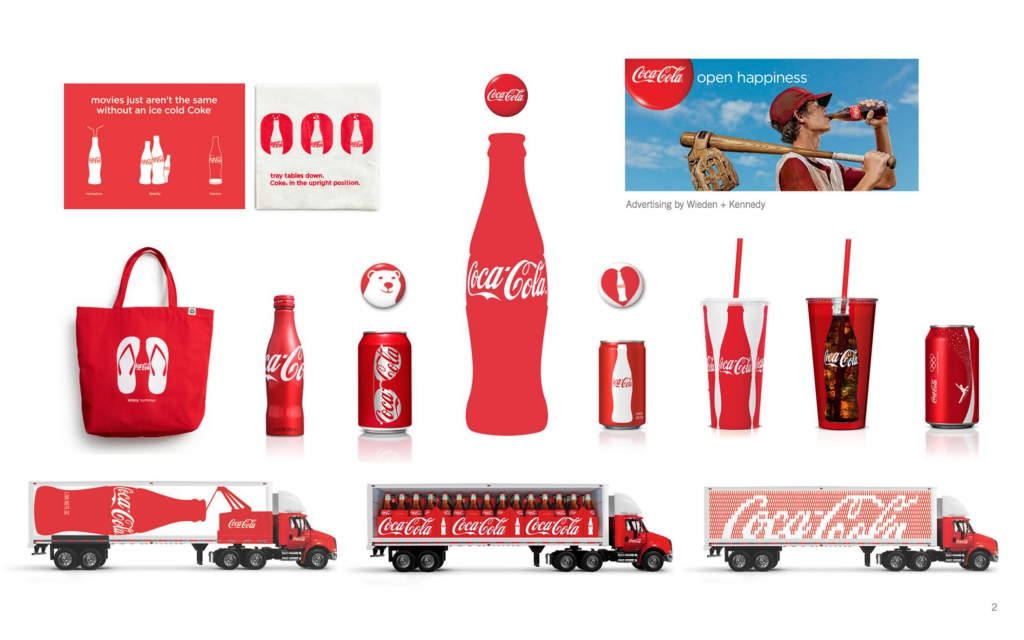
It can be hard to master this consistency if you re not a designer. To get it right, without the budget to work with a printer, agency or freelance designer, use MyCreativeShop s templates to design all your print marketing collateral.
Set a Budget and Stick to It
In a perfect world, you would have an unlimited budget to create all the collateral you need, whenever you need it. However, small businesses often don t have a large marketing budget. For design, your budget can be minimal, depending on who you work with. When designing with MyCreativeShop, you can create an unlimited number of designs for less than $20 per month.
If you work with a printer to create the designs, or an agency or freelance contractor, the prices will fluctuate. According to UpWork, the average rate for a freelance graphic designer is $45 per hour, with rates ranging from $20 per hour to $150 per hour.
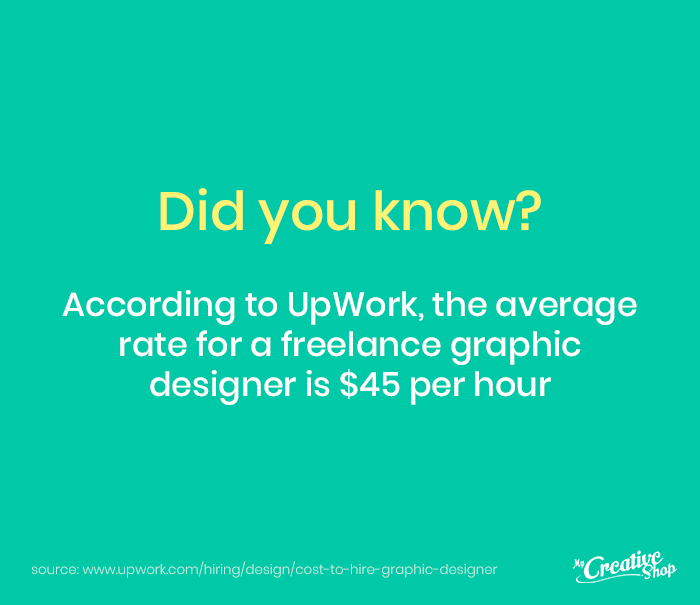
After the graphic design cost, the next thing to budget for is print pricing.
As you create your print budget, ask yourself: How many orders will we need to make for each print product? If you re attending three trade shows, you may need three separate flyer and brochure orders so you can customize your materials for each event. If you re tracking your asset needs in a spreadsheet, you can easily add a column for number of orders and estimated cost to start developing a budget.
If you need help getting estimated print costs? Use our print section to get real print pricing.
Assess and Finalize Your Printing Solutions
It may seem easy to cut costs with printing, however, this aspect of your print marketing collateral strategy might be one of the most important. A FedEx study found 85 percent of consumers believe the quality of a company s printed materials is a direct representation of quality of services. Poor printing leads to bad branding, which could cost you sales.
Because this step is so important, it s essential to find the right printer. First, begin with referrals from other small business owners to narrow down your list of potential printers. Second, make sure you have answers to the following questions before meeting with the printers:
#1: What s your print budget? This will lead into conversations about paper type & finishing options.
Your print budget: It may seem okay to pick the cheapest option, but remember to invest in quality as it will reflect positively on your business.
#2: How many will you need printed (i.e. quantity)?
#3: When do you need them by? Give yourself time to review for errors. Plus, if you need to distribute them, give yourself time.
#4: Where do you need them shipped?
Lastly, in addition to knowing the answers to the questions above, you ll also want to get answers from printers to these questions:
#5: How do they want the design file?
- What format?
- Is bleed required?
- How do they want to receive the file?
- When will they need it by to meet your deadline?
#6: Who would be your primary contact?
#7: Do they have order tracking?
#8: Do they guarantee the quality of your print?
After you have answers to these questions, you ll feel in control and more likely to explore future print marketing ideas with your printer.
Keep reading: The Design to Print Process: A Guide for SMB Owners
Build Your Print Marketing Collateral Strategy Today
A print marketing collateral strategy helps you create a game plan for developing the print materials you need to generate new leads and increase sales. When you build a detailed strategy ahead of time at the beginning of each quarter or year you can prioritize marketing, a critical business tool, while staying within your budget. Create your print marketing collateral strategy today using our best practices and your marketing plan will quickly take shape.